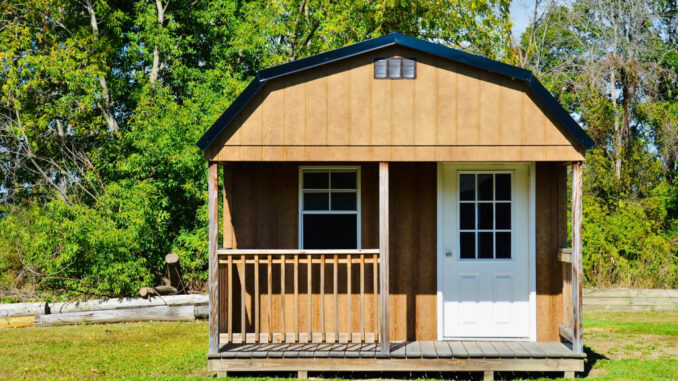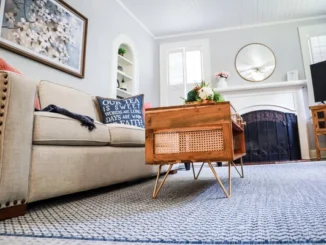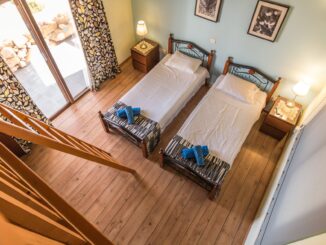
Tiny homes have been growing by leaps and bounds over the past few years – stories and articles featuring these little miniature houses are just about everywhere. From a real estate investment perspective, it might not seem like tiny homes have much to offer, but you might be surprised. Here’s what you need to know about whether tiny homes are a good investment!
What are Tiny Homes?
Tiny homes do pretty much exactly what they say on the tin: they offer a place for someone to live, but on a smaller scale than even the most modest starter home. While there’s some debate as to what size tiny homes start at, a good rule of thumb is that any home that offers 500 square feet of living space or less can be classified as one. Other than that, anything goes; many tiny homes aren’t even built on a permanent house foundation but instead on a mobile platform like a trailer or an RV. In fact, the Tumbleweed Tiny House Company calls its products “tiny house RVs” and builds its homes according to the Recreational Vehicle Industry Association certification standards.
The History of Tiny Homes
The history of the tiny home is really the history of humanity, though often out of necessity. Pioneers and settlers would routinely build a modest home to keep themselves safe and warm, often upgrading to a larger one or expanding their existing homes as their families grew.
Fast forward to around the 1970s when houses began growing in average size, from 1,500 square feet and up – today typical houses can be 2,500 square feet or more – and you’ve got a situation where many houses are so large, expensive, and difficult to maintain that many people decide downsizing is in. Thus, over the past 20 or 30 years, a movement towards living in smaller, more affordable, and more manageable spaces has developed.
The Pros of Tiny Homes
Tiny homes have a lot going for them, and many of these perks make these super-small scale prefab homes a great real estate investment opportunity. Here are some of the biggest pros of tiny homes.
Freedom and Flexibility
First and foremost, people who love the idea of a tiny home are enamored with the freedom and flexibility that having such a small place to live naturally provides. With so many tiny homes being built to RV specifications, it’s easier than ever to lead an adventurous, nomadic lifestyle – all you need is a sturdy vehicle and your trusty tiny home, and you can quite literally live anywhere you like. There’s something to be said for having a different view out your bedroom window every day. Talk about van life!
Lower Costs
With the footprint of a tiny home being so minuscule, your maintenance and upkeep costs are a fraction of those that you would pay to own a traditional house. By the square foot, it does often cost more to construct a tiny home than it does a traditional one. The average 2,000-square-foot home costs about $150 per square foot to build, according to HomeAdvisor, whereas tiny homes constructed by Tumbleweed Tiny House Company — one of the best-known tiny-house builders in America — typically cost over $300 per square foot.
But because the total square footage of a tiny home is so small in comparison to that of a traditional home, the final price tag is much less. Most tiny homes will run you about the same as a decent compact or mid-size sedan, while traditional property values are quite literally hundreds of thousands of dollars. This makes the barrier to homeownership much lower for people interested in a tiny home.
Environmental Sustainability
A smaller home means less waste. The carbon footprint of a tiny home is naturally going to be smaller than a full-sized one, simply due to scale. Additionally, a good number of tiny homes make use of renewable energy technologies like high-efficiency solar panels to provide power, especially those green homes that are designed to be mobile. Add in other environmentally friendly amenities like composting toilets that turn waste into compost, and you’ve got a great way to live as a responsible steward of the planet!
The Cons of Tiny Homes
As fantastic as the advantages that tiny homes offer, there are plenty of downsides you should be aware of. Here are three of the biggest.
Limited Space
The most obvious is that space is at a premium in a tiny home. You won’t have extra bedrooms, storage closets, or garages to store extra things in, and you might not even have the space for things like a full wardrobe or a washer and dryer. This can result in a lot of buyer’s remorse for tiny home buyers: of the 42% of homeowners who have regrets about the size of their home, 33% wish they had bought a larger one, and just 9% wish they had gone smaller, according to a 2017 Trulia survey.
Lack of Privacy
Tiny homes might be good if you’re living alone, but the more people you squeeze into one of these ultra-small homes and the less privacy everyone has. Changing, bathing, or simply getting some time to yourself can be a real challenge – and that says nothing about curious people looking in from the outside!
Zoning and Building Regulations
Finally, there are a lot of legal hurdles that you have to clear if you want to build a tiny home. You’ll need to comply with all relevant state and local zoning and building regulations. While traditional homes have to meet these requirements too, doing so can be more challenging when you’re building a small-scale house on purpose.
Are Tiny Homes a Good Investment?
Tiny homes can be a good investment if you’re smart about it. According to Spruce, the average wholesale cost of a tiny home is about $23,000. So, if you can build one at that average price and sell it for $56,000, you can realize a profit of $23,000, and that’s not too bad.
The Bottom Line
In the end, tiny homes can be a great way to invest in the real estate sector. They’re popular among those looking for a simpler, more affordable lifestyle, especially since they’re much less expensive than purchasing a full-sized home. As long as you ensure your tiny house is built to exacting codes, then there’s plenty of profit to be had in the tiny home market!
Source: Realtybiznews.com


